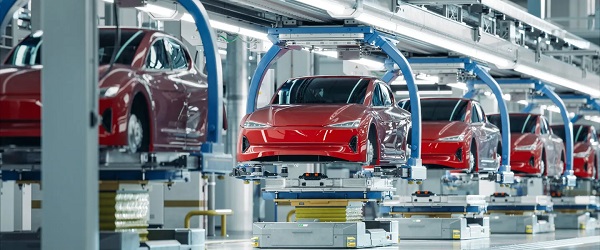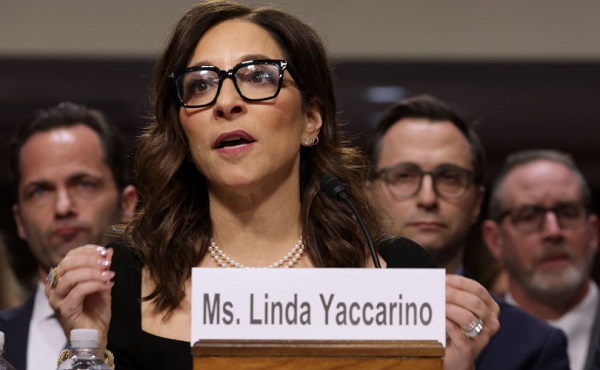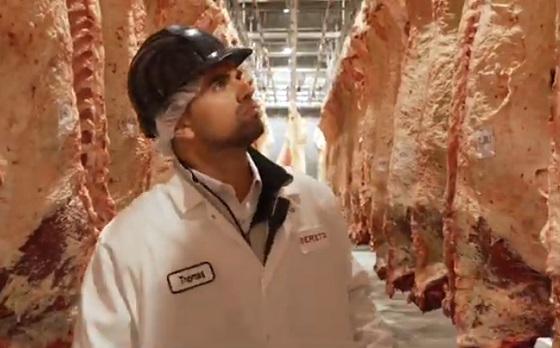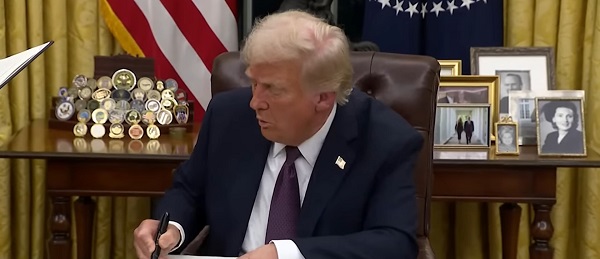Automotive
EV transition stalls despite government mandates and billion-dollar handouts

From the Fraser Institute
By Elmira Aliakbari and Julio Mejía
Both Canada and the United States have set ambitious mandates to accelerate the transition from combustion vehicles to zero-emission vehicles. According to the Trudeau government, all new passenger vehicles and light trucks sold in Canada must be zero-emission vehicles by 2035, with interim targets of 20 per cent by 2026 and 60 per cent by 2030. Similarly, the Biden administration has mandated that two-thirds of new vehicles sold in the U.S. must be electric by 2032. But despite massive taxpayer-funded subsidies for the electric vehicle (EV) sector, storm clouds are growing for the industry.
In April, Tesla laid off 10 per cent of its global workforce as it grapples with slow EV demand and falling sales. Similarly, Ford recently announced it would delay the start of EV production at the Oakville, Ontario plant by two years to let the consumer market develop and allow for further development of EV battery technology. Car rental giant Hertz earlier this year announced plans to sell one-third of its U.S. electric vehicle fleet and reinvest in gas-powered cars due to high repair costs and weak demand for its battery-powered cars. General Motors has abandoned the goal of producing 400,000 EVs by mid-2024 due to lower-than-expected sales.
The sluggish demand for EVs and the response from automakers should raise red flags for both the Trudeau government and Biden administration, given the massive subsidies (a.k.a. corporate welfare) injected into the EV and battery production industry. For instance, in Ontario, the Trudeau government and the Ford government have given $28.2 billion to the Stellantis EV battery plant in Windsor and the Volkswagen plant in St. Thomas. According to the Parliamentary Budget Officer, it will take 20 years for the federal and Ontario governments to break even on the $28 billion pledged for those two plants. And this doesn’t include the $5 billion subsidy to Honda for a new EV manufacturing plant in the province.
Similarly, in Quebec, federal and provincial governments have pledged to spend $2.7 billion in subsidies for a new EV battery manufacturing plant and give $644 million to help Ford build a plant to produce EV battery materials.
But in reality, the EV transition faces major hurdles despite the massive amounts of taxpayer money being thrown at the industry.
Firstly, we lack adequate power grid infrastructure to meet the electricity demands of EV mandates. According to a recent study, meeting Canada’s EV mandate by 2035 could increase electricity demand by up to 15.3 per cent nationwide, necessitating substantial investments in new generation capacity and transmission infrastructure. Specifically, Canada would need to construct 10 new mega hydroelectric dams, comparable to British Columbia’s Site C, or alternatively, 13 new gas plants of 500-megawatt (MW) capacity to accommodate the surge in electricity demand from EVs.
Yet the timelines and costs associated with such projects are daunting. Drawing from recent experience with B.C.’s Site C dam, it took more than a decade to plan and comply with environmental regulations and approximately another decade to construct. To date, Site C, which remains under construction, is expected to cost $16 billion.
Secondly, there’s a shortage of mineral supply for EV batteries, with projections indicating the need for numerous new mines to meet EV adoption mandates. According to a recent study, to meet international EV adoption mandates (including mandates in Canada and the U.S.) by 2030, the world would need 50 new lithium mines, 60 new nickel mines, 17 new cobalt mines, 50 new mines for cathode production, 40 new mines for anode materials, 90 new mines for battery cells, and 81 new mines for EV bodies and motors, for a total of 388 new mines worldwide. For context, in 2021 there were only 340 metal mines operating in Canada and the U.S.
Historically, the development of mining and refining facilities has been sluggish. Production timelines range from six to nine years for lithium and 13 to 18 years for nickel—two elements critical for EV batteries. The aggressive government timelines for EV adoption clash with historically sluggish metal and mineral production, raising the risk of EV manufacturers falling short of needed minerals.
The EV transition faces major obstacles, and the recent scaling back or delays in EV production by automakers should serve as a warning to governments about the feasibility of their forced transition policies, which clearly put Canadian taxpayers at risk.
Authors:
Automotive
America’s EV Industry Must Now Compete On A Level Playing Field


From the Daily Caller News Foundation
America’s carmakers face an uncertain future in the wake of President Donald Trump’s signing of the One Big Beautiful Bill Act (OBBBA) into law on July 4.
The new law ends the $7,500 credit for new electric vehicles ($4,000 for used units) which was enacted as part of the 2022 Inflation Reduction Act as of September 30, seven years earlier than originally planned.
The promise of that big credit lasting for a full decade did not just improve finances for Tesla and other pure-play EV companies: It also served as a major motivator for integrated carmakers like Ford, GM, and Stellantis to invest billions of dollars in capital into new, EV-specific plants, equipment, and supply chains, and expand their EV model offerings. But now, with the big subsidy about to expire, the question becomes whether the U.S. EV business can survive in an unsubsidized market? Carmakers across the EV spectrum are about to find out, and the outlook for most will not be rosy.
These carmakers will be entering into a brave new world in which the market for their cars had already turned somewhat sour even with the subsidies in place. Sales of EVs stalled during the fourth quarter of 2024 and then collapsed by more than 18% from December to January. Tesla, already negatively impacted by founder and CEO Elon Musk’s increased political activities in addition to the stagnant market, decided to slash prices in an attempt to maintain sales momentum, forcing its competitors to follow suit.
But the record number of EV-specific incentives now being offered by U.S. dealers has done little to halt the drop in sales, as the Wall Street Journal reports that the most recent data shows EV sales falling in each of the three months from April through June. Ford said its own sales had fallen by more than 30% across those three months, with Hyundai and Kia also reporting big drops. GM was the big winner in the second quarter, overtaking Ford and moving into 2nd place behind Tesla in total sales. But its ability to continue such growth absent the big subsidy edge over traditional ICE cars now falls into doubt.
The removal of the per-unit subsidies also calls into question whether the buildout of new public charging infrastructure, which has accelerated dramatically in the past three years, will continue as the market moves into a time of uncertainty. Recognizing that consumer concern, Ford, Hyundai, BMW and others included free home charging kits as part of their current suites of incentives. But of course, that only works if the buyer owns a home with a garage and is willing to pay the higher cost of insurance that now often comes with parking an EV inside.
Decisions, decisions.
As the year dawned, few really expected the narrow Republican congressional majorities would show the political will and unity to move so aggressively to cancel the big IRA EV subsidies. But, as awareness rose in Congress about the true magnitude of the budgetary cost of those provisions over the next 10 years, the benefit of getting rid of them ultimately subsumed concerns about the possible political cost of doing so.
So now, here we are, with an EV industry that seems largely unprepared to survive in a market with a levelized playing field. Even Tesla, which remains far and away the leader in total EV sales despite its recent struggles, seems caught more than a little off-guard despite Musk’s having been heavily involved in the early months of the second Trump presidency.
Musk’s response to his disapproval of the OBBBA was to announce the creation of a third political party he dubbed the American Party. It seems doubtful this new vanity project was the response to a looming challenge that members of Tesla’s board of directors would have preferred. But it does seem appropriately emblematic of an industry that is undeniably limping into uncharted territory with no clear plan for how to escape from existential danger.
We do live in interesting times.
David Blackmon is an energy writer and consultant based in Texas. He spent 40 years in the oil and gas business, where he specialized in public policy and communications.
Automotive
Federal government should swiftly axe foolish EV mandate

From the Fraser Institute
Two recent events exemplify the fundamental irrationality that is Canada’s electric vehicle (EV) policy.
First, the Carney government re-committed to Justin Trudeau’s EV transition mandate that by 2035 all (that’s 100 per cent) of new car sales in Canada consist of “zero emission vehicles” including battery EVs, plug-in hybrid EVs and fuel-cell powered vehicles (which are virtually non-existent in today’s market). This policy has been a foolish idea since inception. The mass of car-buyers in Canada showed little desire to buy them in 2022, when the government announced the plan, and they still don’t want them.
Second, President Trump’s “Big Beautiful” budget bill has slashed taxpayer subsidies for buying new and used EVs, ended federal support for EV charging stations, and limited the ability of states to use fuel standards to force EVs onto the sales lot. Of course, Canada should not craft policy to simply match U.S. policy, but in light of policy changes south of the border Canadian policymakers would be wise to give their own EV policies a rethink.
And in this case, a rethink—that is, scrapping Ottawa’s mandate—would only benefit most Canadians. Indeed, most Canadians disapprove of the mandate; most do not want to buy EVs; most can’t afford to buy EVs (which are more expensive than traditional internal combustion vehicles and more expensive to insure and repair); and if they do manage to swing the cost of an EV, most will likely find it difficult to find public charging stations.
Also, consider this. Globally, the mining sector likely lacks the ability to keep up with the supply of metals needed to produce EVs and satisfy government mandates like we have in Canada, potentially further driving up production costs and ultimately sticker prices.
Finally, if you’re worried about losing the climate and environmental benefits of an EV transition, you should, well, not worry that much. The benefits of vehicle electrification for climate/environmental risk reduction have been oversold. In some circumstances EVs can help reduce GHG emissions—in others, they can make them worse. It depends on the fuel used to generate electricity used to charge them. And EVs have environmental negatives of their own—their fancy tires cause a lot of fine particulate pollution, one of the more harmful types of air pollution that can affect our health. And when they burst into flames (which they do with disturbing regularity) they spew toxic metals and plastics into the air with abandon.
So, to sum up in point form. Prime Minister Carney’s government has re-upped its commitment to the Trudeau-era 2035 EV mandate even while Canadians have shown for years that most don’t want to buy them. EVs don’t provide meaningful environmental benefits. They represent the worst of public policy (picking winning or losing technologies in mass markets). They are unjust (tax-robbing people who can’t afford them to subsidize those who can). And taxpayer-funded “investments” in EVs and EV-battery technology will likely be wasted in light of the diminishing U.S. market for Canadian EV tech.
If ever there was a policy so justifiably axed on its failed merits, it’s Ottawa’s EV mandate. Hopefully, the pragmatists we’ve heard much about since Carney’s election victory will acknowledge EV reality.
-

 Business2 days ago
Business2 days agoWEF-linked Linda Yaccarino to step down as CEO of X
-

 Automotive2 days ago
Automotive2 days agoAmerica’s EV Industry Must Now Compete On A Level Playing Field
-

 Business2 days ago
Business2 days ago‘Experts’ Warned Free Markets Would Ruin Argentina — Looks Like They Were Dead Wrong
-

 International2 days ago
International2 days agoSecret Service suspends six agents nearly a year after Trump assassination attempt
-

 Alberta1 day ago
Alberta1 day agoAlberta school boards required to meet new standards for school library materials with regard to sexual content
-

 Environment22 hours ago
Environment22 hours agoEPA releases report on chemtrails, climate manipulation
-

 Business1 day ago
Business1 day agoCarney government should recognize that private sector drives Canada’s economy
-

 Bruce Dowbiggin1 day ago
Bruce Dowbiggin1 day agoThe Covid 19 Disaster: When Do We Get The Apologies?









